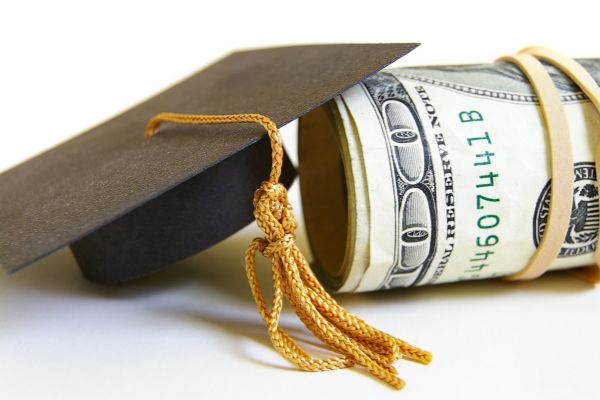![student-loan-01-min.jpg]()
For many vulnerable borrowers, the effects of student debt are even more crushing. Nearly one-third of borrowers have student debt but no degree, according to an analysis by the Department of Education of a recent cohort of undergraduates. Many of these students could not complete their degree because the cost of attendance was too high. About 16% of borrowers are in default – including nearly a third of senior citizens with student debt – which can result in the government garnishing a borrower’s wages or lowering a borrower’s credit score. The student debt burden also falls disproportionately on Black borrowers. Twenty years after first enrolling in school, the typical Black borrower who started college in the 1995-96 school year still owed 95% of their original student debt. Forgiving student debt would provide immediate and significant relief to these borrowers, and it would also have ripple effects throughout the economy. Student loan forgiveness would free up billions of dollars that could be used to buy homes, start businesses, and save for retirement. It would also help to close the wealth gap between Black and white families, which currently stands at $154,000. forgiven student debt would be an investment in our economy and our future.
The Department of Justice, in cooperation with the Department of Education, announced a new process for handling student debt loan cases when people want to get rid of their federal student loans. The new process will make sure that everyone gets the same treatment when trying to discharge their federal student loans and it will also make it easier for people to identify cases where discharge is appropriate. The Associate Attorney General sent out guidance explaining the new process to all U.S. Attorneys. Under this new process, the Department of Education will provide data to the Department of Justice on a regular basis about federal student loan borrowers who have filed for student loan discharge in bankruptcy. The Department of Justice will then review the data to identify any potential instances of fraud or abuse. If the Department of Justice finds evidence of fraud or abuse, it will take appropriate law enforcement action. This new process will help ensure that student debtors receive consistent and fair treatment when they seek to discharge their student loans in bankruptcy, and it will protect taxpayers from Student debt relief scams.
Below are listed the basic criteria to classify for a federal student loan forgiveness program in 2022:
-
Debtor lacks the present ability to pay.
-
This is presumed if the IRS standard expenses surpass the debtor’s income.
-
Debtor’s inability is likely to continue in the future.
-
This is presumed if one the following:
-
Debtor is over 65;
-
Debtor has a disability or medical condition impacting their potential income;
-
Debtor was unemployed for 5 of the last 10 years
-
Debtor did not get the degree for which they incurred the debt;
-
The loan has been in repayment status for 10 years.
-
Debtor has acted in good faith in trying to repay.
-
This is presumed if one of the following:
-
Debtor made a payment;
-
Debtor applied for forbearance;
-
Debtor applied for IDRP (income driven repayment plan);
-
Debtor applied for federal consolidation;
-
Debtor responded to a collector;
-
Debtor engaged with Dept of Ed or collector;
-
Debtor engaged with a 3rd party to help with managing the debt.
The guidance applies to future and pending cases.
The Department of Education has announced that they will be providing up to your whole student debt loan relief for qualifying borrowers.
Summary:
-
The Department of Education has announced a new process for handling student debt loan cases when people want to get rid of their federal student loans.
-
The new process will make sure that everyone gets the same treatment when trying to discharge their federal student loans and it will also make it easier for people to identify cases where discharge is appropriate.
-
Under this new process, the Department of Education will provide data to the Department of Justice on a regular basis about federal student loan borrowers who have filed for student loan discharge in bankruptcy.
-
If the Department of Justice finds evidence of fraud or abuse, it will take appropriate law enforcement action.

